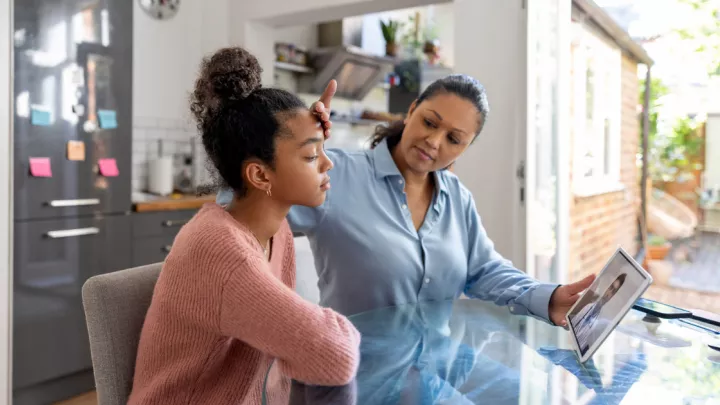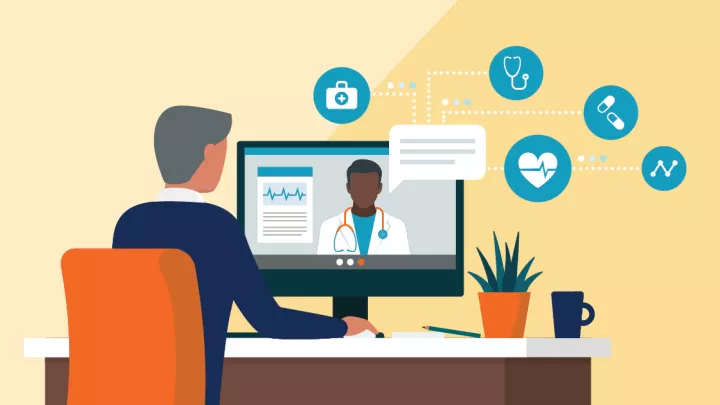When to see a doctor for abdominal pain

Most of us have experienced the occasional abdominal discomfort or upset stomach. However, there are differences between stomach discomfort (such as a virus, infection or food poisoning) and swift, severe abdominal pain (such as appendicitis).
Still, it can sometimes be difficult to know whether to wait it out or see a doctor.
Abdominal discomfort or pain can have many causes. To help you make an informed decision, we will explore whether your pain may require a discussion with a doctor or be a sign of a more severe condition that requires immediate medical attention.
Why abdominal pain can be tricky
Abdominal pain can be a simple or complex issue. Your abdomen houses many organs, muscles and tissue, and pain can arise from various sources in or around the entire area between your ribs and pelvis. It's not always easy to pinpoint the cause, as pain may also radiate to other areas outside the abdomen.
Types of abdominal pain
When describing the location of your pain, there are four main regions to know. This is important as it may indicate which organs may be involved.
- Upper and lower, with the upper above your belly button and the lower below.
- Left or right side, with the middle of your abdomen from the sternum to the pelvis being the dividing line.
For example, pain in the upper right may indicate a problem with the liver, gallbladder or kidney. Pain in the upper left may signal an issue with the stomach, pancreas, kidney or spleen. With the lower abdomen housing most of your small and large intestine, lower pain may indicate problems in the colon or other pelvic organs. Lower left pain can be associated with diverticulitis and lower right pain appendicitis.
Pain may feel mild or severe, dull or sharp, burning or achy, constant or occasional, and may be in one spot or all over.
“The types of abdominal pain we see in the Immediate Care Clinics often involve vague symptoms, but they can also include serious conditions requiring a trip to the emergency room,” says Shawna Ziegler, APRN. “But more often, we see children and adults with constipation problems, diarrhea, vomiting, gallbladder pain or gastrointestinal problems. We can assess your situation, take labs or X-rays if needed, test for certain infections, including STD (sexually transmitted disease), offer treatment and refer you if necessary. If we feel your situation is a potential emergency or warrants additional testing, we will send you to the emergency room.”
How to tell if nausea and diarrhea are caused by COVID-19, the stomach flu or food poisoning.
When to see a doctor for abdominal pain
“In general, see a doctor if you’ve experienced unexplained pain for more than 72 hours,” Ziegler advises. If you feel like something is off with you or your child, talk with your doctor or head to one of our Immediate Care Clinics. Validation for worrisome pain is a reassuring start. We can at least talk through your symptoms, do an exam, and take labs if necessary to rule things out. We can also help fast-track testing and referrals.”
However, if your pain is sudden, persistent or severe, if you’ve been injured or if you are pregnant, seek medical attention immediately.
Go to the emergency room if your abdominal pain includes:
- Persistent or quick onset fever, nausea or vomiting.
- Blood in your stool, urine or vomit.
- An inability to urinate for more than 18 hours.
- Unusual vital signs, such as very high or low blood pressure.
- A recent abdominal surgery.
- Pain localized to a specific area accompanied by fever, chills or sweating.
- A swollen abdomen that is tender to the touch.
- Yellowing of the eyes and skin (jaundice).
- Sudden sharp, stabbing pain or pain that spreads to other parts of your body.
- If you suspect an ectopic pregnancy.
- Shortness of breath or pain that gets worse with activity.
Who should I see for abdominal pain? Know your options
If you’re experiencing abdominal pain, you have options:
- Call your doctor’s office and speak directly to your doctor or nurse. They can direct you to where you should go.
- If you need same-day care outside of regular business hours, head to a convenient Immediate Care Clinic.
- If you have severe symptoms, call 911 or go to your nearest emergency room.
- If your discomfort isn’t an emergency, set up a telehealth visit. See the difference between an E-Visit, video Visit or Immediate Care Video Visit.
- If you’ve set up a One Chart | Patient online portal for your health information online, you can send a nonemergency question directly to your doctor.
See our downloadable chart for guidance on whether to go to an Immediate Care Clinic, doctor's office or emergency department.







